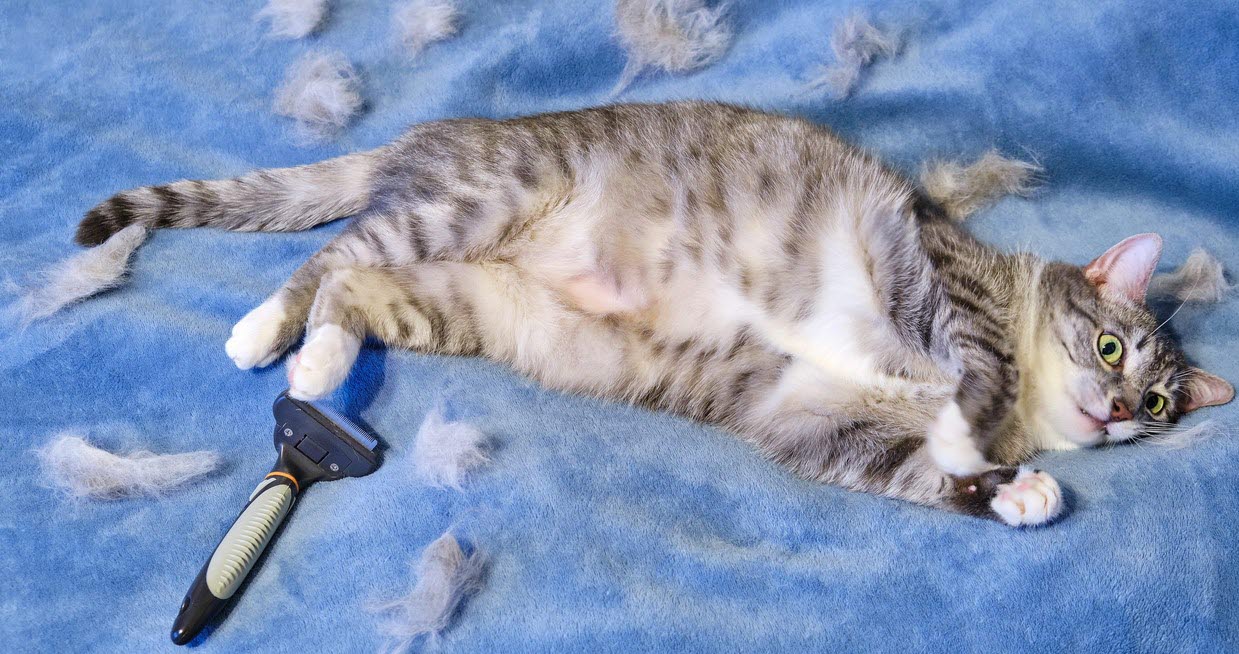Hairballs in cats explained

Hairballs are a common feline problem, particularly in long-haired cats, but they are not actually considered “normal”. Cats evolved a barbed, brush-like tongue to groom themselves effectively, and naturally, this leads to them swallowing some hair. In most short-haired cats with no other health issues, this hair will move through the gut and be passed via faeces without issue.
Why does my cat bring up hairballs?
The formation of a hairball suggests either that the cat is swallowing too much hair, or that the hair isn’t able to pass through the cat’s gut as normal. This can occur due to:
- A long-haired cat receiving insufficient supplementary grooming from their owner to remove loose hairs
- The cat over-grooming due to:
- Skin disease, e.g. parasites such as fleas or mites
- Anxiety, e.g. due to stressful changes in the cat’s environment
- Pain, e.g. due to urinary tract disease or joint pain
- The cat having gastrointestinal issues that prevent the hair from passing through properly, such as:
- Dehydration causing dry gut contents, e.g. due to chronic kidney disease
- Inflammatory bowel disease or other gut inflammation
- Gastrointestinal tumours or other intestinal blockages
- Intestinal parasites (e.g. roundworm) or infections
- Constipation
In other cases, cats thought to be bringing up hairballs can actually be coughing due to chronic respiratory disease such as feline asthma - these cats may cough so hard that they end up retching up a small amount of stomach contents.
What should I do if my cat is bringing up hairballs?
If your cat is regularly vomiting hairballs, or if they seem to be unsuccessfully retching, it’s best to have them examined by your veterinarian. If possible, try to video the behaviour to show your veterinarian, to help differentiate coughing from retching.
Depending on the severity of your cat’s issue and the findings during physical examination, your veterinarian may either suggest simple home management options for hairballs, or further testing to help rule out an underlying cause. This can include initial tests such as skin scrape tests for mites, chest x-rays (if coughing is suspected), general blood tests, and abdominal imaging such as x-rays or ultrasound.
Hairball prevention in cats
If your cat has an underlying health issue causing their hairballs, this will obviously require veterinary diagnosis and treatment.
However, in most cases, you can help prevent hairball formation with regular grooming to remove loose hairs. Use a metal comb (with rounded tips) and/or a de-shedding tool such as a “Furminator”. Most long-haired cats will require thorough grooming at least twice weekly, and some require it daily. This is also a great time to bond with your cat and check them for any skin lumps or other lesions.
It is important to ensure your cat is always well-hydrated. Consider including some wet food in their diet, and avoid using plastic water bowls which some cats dislike. If your cat seems to like fresh or “moving” water, consider purchasing a cat drinking fountain or just setting out fresh daily glasses of water for your cat to drink from. Some cats also benefit from pet-safe oral laxative medications, to help hair pass through their gut more easily.
If you have any concerns about hairballs in your cat, we recommend that you speak to your veterinarian for assistance.
